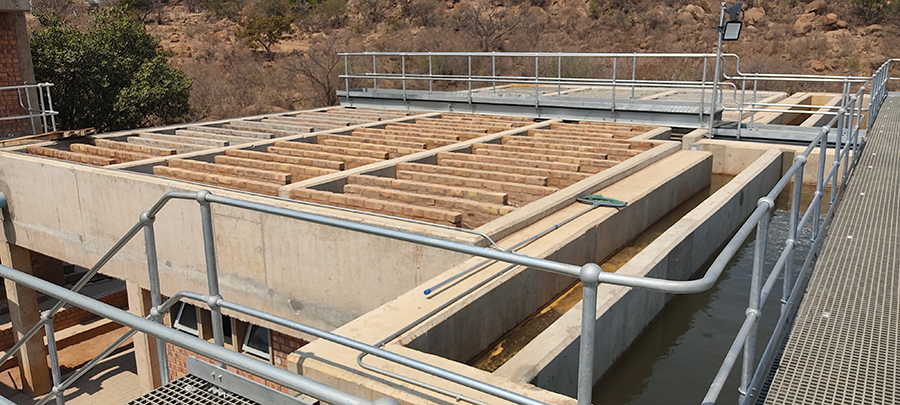One of Ceenex’s many flagship water projects, the Bundu water-treatment works (WTW), received the second-highest score for the performance of WTWs in Mpumalanga in the 2023 Blue Drop report, at 88%. This again reaffirms the company’s commitment to engineering excellence and leadership in the design and implementation of top-notch water infrastructure.
The Blue Drop report contains the findings of a comprehensive assessment of the state of all 958 water-supply systems (WSS) in the country in every Water Service Authority (WSA). Measurables include the condition of the infrastructure and the way in which WTWs are being maintained and operated. Other important factors that are assessed include the treatment processes; monitoring and control; and the skills and qualifications of operators of the WTWs.
Bundu WTW received high scores for its general aspects; raw-water handling; chemical dosing and storage; flocculation; phase separation; disinfection; high-pumpstation; sludge treatment; and process unit.
Notably, drinking water from Bundu WTW achieved a 99,58% chemical compliance status according to the SANS 241:2015 drinking water specification. For drinking water to be considered safe for human consumption, it must achieve at least a 95% chemical compliance.
Engineers from Ceenex’s Infrastructure Discipline are proud to be associated with the design and construction supervision of a WTW that has been described as being “in secure and excellent condition” in the 2023 Blue Drop report. However, there is also a sense of achievement in the fact that the plant is being well-operated by municipal staff. According to the report, municipal staff are motivated and very proud of their WTW.
To simplify the operation of the WTW, Ceenex designed a conventional treatment process. It uses a high-pressure pumping system that comprises top-of-the-range variable-speed pumps that have been sourced locally. Designed to provide central access to the control system, the human-machine interface system is easy to operate. In addition, a novel mechanical rapid gravity sand filter is used to remove fine suspended solids from the water. This limits operator intervention to periodic maintenance inspections. Powdered Activated Carbon was also incorporated into the treatment process to remove colouring from the water that is being extracted from the Moses River.
With a capacity of 3ML/d, this is Thembisile Hani Local Municipality’s first WTW. The municipality previously relied upon other WSAs for the supply of bulk water. This hindered uninterrupted supply of drinking water to constituents.
The WTW is part of a water-augmentation scheme that Ceenex recently completed to bolster water supplies to Boekenhouthoek, Mathysenloop, Machipe and Bundu in Mpumalanga. Funded by the Municipal Infrastructure grant, this is the largest service-delivery infrastructure project to have ever been undertaken by the municipality.
As part of the project, Ceenex also designed and supervised the construction of a new 5ML weir and abstraction point on the Moses River; a new 10ML command reservoir in Bundu; and sections of the 8km bulk pipeline associated with the scheme.
Notably, the command reservoir is one of the first to be built in the country using precast, prestressed concrete. The use of prefabricated concrete technology saved in construction time and ensured a robust structure that will continue to add value for many years. The Blue Drop report notes that the water-retaining structure is leak free and in good condition, featuring telemetry with a sensor to measure water levels remotely and a secure fence.
“We are committed to our vision of being a centre of engineering excellence or ‘Ceenex’ in short. This guides everything that we do. While a proud moment for our Infrastructure Engineering Division, it remains a serious concern that as many as 958 WSSs in the country in 62 Water Service Authorities were identified as being in a dire state in the latest Blue Drop report. This is compared to the 174 WSSs that needed urgent intervention in the 2014 report. Thus, there has been a significant decline in our WSSs over the past nine years. To avoid a serious crisis, we can no longer delay upgrading existing and building new water infrastructure. We need to act now,” Kgomotso Sekgobela, Executive Director of Ceenex, concludes.

